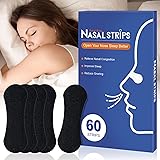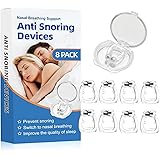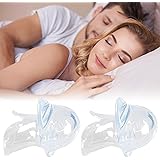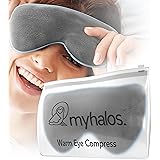Choosing a new mattress is a significant investment in one’s sleep and overall well-being, yet it can often feel like a daunting task given the sheer volume of options available. Many individuals are left grappling with questions about which mattress type will best suit their unique needs and preferences. Fortunately, understanding the core differences between popular mattress constructions can simplify this process considerably. In the accompanying video, the Mattress Nerd team offers valuable insights into two of the most popular contenders in the market today: memory foam mattresses and hybrid mattresses. This detailed article aims to expand upon their expert advice, providing a comprehensive guide to help you navigate your decision, ensuring you select a sleeping surface that genuinely enhances your nightly rest.
Memory Foam vs. Hybrid Mattresses: Unraveling the Differences for Optimal Sleep
Understanding Memory Foam Mattresses
Memory foam mattresses represent a significant evolution in sleep technology, renowned for their distinctive feel and excellent pressure-relieving capabilities. Fundamentally, a memory foam mattress is characterized by its exclusive use of various foam layers in its construction, often including traditional memory foam and polyurethane foam, commonly referred to as polyfoam. The design typically incorporates softer foam layers at the top, which serve as the comfort layers, and denser, firmer foam at the base, providing essential support and contributing to the mattress’s overall durability. This specific layering allows the mattress to adapt intimately to the sleeper’s body.
The unique mechanism of memory foam involves its reaction to body heat and weight. As an individual lies down, the foam softens and molds around their shape, creating a custom contour. This slow-response characteristic is often visualized in commercials where a handprint gradually disappears from the foam surface. The sensation is often described as sinking into a “warm cocoon,” offering an unparalleled sense of cradling. This conforming ability is particularly beneficial for alleviating pressure points, which are areas of the body that bear the most weight, such as the hips, shoulders, and lower back.
Exploring Hybrid Mattresses
Hybrid mattresses, in contrast, offer a sophisticated blend of different materials, engineered to provide a balanced sleep experience. These mattresses are designed to combine the best attributes of both foam and innerspring constructions, making them a versatile choice for a wide range of sleepers. A typical hybrid mattress features a comfortable top layer, which often consists of memory foam, latex, or other specialized foams, coupled with a robust support core made from individually wrapped coils. This innovative combination aims to deliver both plush comfort and strong foundational support.
The inclusion of coils in a hybrid design provides several distinct advantages. The individually wrapped pocketed coils are designed to move independently, which helps to reduce motion transfer more effectively than traditional interconnected innerspring systems. Additionally, these coils introduce a significant level of bounce and responsiveness to the mattress, making it considerably easier to move around on compared to a purely memory foam bed. This construction also promotes better airflow through the mattress structure, addressing one of the common concerns associated with all-foam beds.
Key Differences: Memory Foam vs. Hybrid Mattresses
While both memory foam and hybrid mattresses are popular choices for enhancing sleep comfort, they offer fundamentally different experiences. Understanding these distinctions is crucial for selecting the mattress that aligns perfectly with your individual needs and preferences. These variations span feel, temperature regulation, durability, and motion isolation, each playing a vital role in the overall sleep quality provided.
Feel and Responsiveness
The “feel” of a mattress is a highly subjective yet critical factor in purchasing decisions. Memory foam is characterized by its distinctive slow-response feel; it gradually conforms to the body, creating a deep, enveloping sensation where sleepers tend to sink into the mattress. This can be particularly appealing to those who desire a close-conforming hug and exceptional pressure relief. Conversely, hybrid mattresses, with their coil support systems, exhibit significantly more bounce and responsiveness. Sleepers will find it easier to change positions and move around on a hybrid, as they lie more “on top” of the mattress rather than sinking deeply into it. This characteristic is often preferred by those who dislike feeling “stuck” in their bed.
Temperature Regulation
One of the long-standing concerns associated with traditional memory foam is its tendency to retain body heat, which can lead to warmer sleep for some individuals. The dense nature of foam can sometimes trap heat, radiating it back to the sleeper. However, advancements in foam technology, such as the incorporation of gel infusions, open-cell structures, and phase-change materials, have made many modern memory foam mattresses significantly cooler. Hybrid mattresses naturally excel in temperature regulation due to their coil layer. The open structure of the coils allows for much greater airflow throughout the mattress, dissipating heat effectively and contributing to a cooler, more breathable sleep environment, making them an excellent choice for hot sleepers.
Durability and Longevity
The lifespan of a mattress is an important consideration for many buyers, influencing the long-term value of their investment. Generally, hybrid mattresses are often cited as being more durable than their all-foam counterparts. The robust steel coils in hybrid beds are designed to withstand significant weight and repeated compression over time, offering a strong and lasting support system. While high-density memory foam can also be very durable, some lower-quality foams may begin to soften or develop body impressions more quickly. Industry data often indicates that well-constructed hybrid mattresses can have a slightly longer usable lifespan compared to an average memory foam mattress, particularly for heavier individuals who require more substantial support over many years.
Motion Isolation
For individuals who share a bed with a partner, motion isolation is a critical feature that directly impacts undisturbed sleep. Memory foam mattresses are widely celebrated for their exceptional ability to absorb motion. The dense, viscous nature of the foam prevents movement from transferring across the bed; when one partner shifts or gets up, the other is far less likely to feel the disturbance. Hybrid mattresses, due to their bouncy coil system, historically presented more challenges with motion transfer. However, modern hybrid designs with individually wrapped pocketed coils have significantly improved motion isolation compared to traditional innerspring beds, as each coil reacts independently. While they may not match memory foam’s absolute motion-canceling capabilities, premium hybrids offer very respectable performance in this regard, making them a suitable option for couples.
Cost Considerations
Budget is a practical consideration for nearly every mattress shopper. Memory foam mattresses generally represent a more accessible price point. Entry-level and mid-range memory foam options are often available at a lower cost than comparable hybrid models, allowing individuals to save “hundreds of bucks” while still obtaining a comfortable and supportive sleep surface. This affordability makes memory foam a popular choice for budget-conscious buyers seeking quality pressure relief. Hybrid mattresses, incorporating multiple sophisticated layers of both foam and coils, typically come with a higher price tag. The complex construction and the use of diverse, often premium materials contribute to their increased cost. Therefore, while offering advanced features, a hybrid mattress usually requires a larger initial investment.
Memory Foam Mattresses: The Pros and Cons
Evaluating the advantages and disadvantages of memory foam mattresses is essential for determining if this type of bed aligns with your specific sleep requirements. Their unique properties appeal to a particular segment of sleepers, offering distinct benefits while also presenting a few potential drawbacks that should be considered.
Pros of Memory Foam Mattresses
- **Superior Pressure Relief:** Memory foam’s defining characteristic is its ability to conform precisely to the body’s curves. Research consistently shows that this deep contouring distributes body weight evenly, significantly reducing pressure on sensitive areas like the hips, shoulders, and lower back, often leading to a noticeable reduction in aches and pains upon waking.
- **Exceptional Motion Isolation:** For those sharing a bed, memory foam is an ideal choice due to its excellent motion isolation properties. The material absorbs movement at its source, meaning that the tossing and turning of a partner or pet are significantly minimized across the mattress surface, allowing for undisturbed sleep.
- **Personalized Comfort:** The way memory foam molds to the unique contours of an individual’s body creates a highly personalized sleep surface. This personalized hug sensation is often perceived as incredibly comfortable, providing a feeling of being cradled and supported specifically for one’s shape.
- **Budget-Friendly Options:** Generally, memory foam mattresses are available at a lower price point compared to hybrid models. This makes them an attractive option for budget-conscious consumers who are seeking quality sleep benefits without a significant financial outlay.
Cons of Memory Foam Mattresses
- **Potential for Heat Retention:** A common concern with traditional memory foam is its tendency to retain body heat due to its dense structure. While many modern memory foams incorporate cooling technologies, some individuals, particularly hot sleepers, may still find themselves sleeping warmer on these beds compared to more breathable alternatives.
- **Slow Response Time:** The slow-response nature of memory foam, while excellent for pressure relief, can make it challenging for some sleepers to change positions or move around easily. Individuals may feel “stuck” or find that activities like intimate moments are less comfortable due to the lack of immediate bounce.
- **Off-Gassing:** Upon unboxing, new memory foam mattresses can emit a distinct chemical odor, commonly referred to as “off-gassing.” This smell, though generally harmless and temporary, can be bothersome for individuals sensitive to odors. Proper ventilation of the room for a few days typically alleviates this issue.
Hybrid Mattresses: The Pros and Cons
Hybrid mattresses offer a compelling alternative, marrying the best elements of foam comfort with coil support. This combination delivers a unique sleep experience that caters to a broad spectrum of sleepers, presenting its own set of advantages and a few considerations that potential buyers should be aware of.
Pros of Hybrid Mattresses
- **Balanced Comfort and Support:** Hybrid mattresses excel at providing an optimal balance of plush comfort from their foam or latex layers and robust, responsive support from their coil core. This synergistic combination caters to a wide variety of sleep preferences, offering the best of both worlds.
- **Enhanced Breathability and Airflow:** The coil layer in hybrid mattresses naturally creates open channels for air circulation. This superior airflow helps to dissipate heat more effectively than all-foam beds, making hybrids an excellent choice for hot sleepers who prioritize a cooler and fresher sleep environment.
- **Easier Movement and Responsiveness:** Thanks to their springy coil systems, hybrid mattresses offer a greater degree of bounce and responsiveness. This makes it considerably easier for individuals to move, change positions, and get in and out of bed, appealing particularly to combination sleepers or those who dislike the deeply conforming feel of pure memory foam.
- **Increased Durability and Longevity:** The robust construction of hybrid mattresses, particularly the strong steel coil base, often contributes to a longer lifespan. These durable components are designed to provide consistent support and resist sagging over many years, representing a worthwhile long-term investment for many households.
- **Customizable Options:** With a combination of materials, hybrid mattresses tend to be more customizable. Manufacturers can incorporate a variety of foams, latex, and coil configurations to target specific feels, firmness levels, and support features, allowing for a diverse range of options to suit individual needs.
Cons of Hybrid Mattresses
- **Higher Price Point:** Due to their complex construction and the use of multiple high-quality materials, hybrid mattresses typically come with a higher price tag than most memory foam options. This can be a significant factor for budget-conscious consumers who are seeking a more affordable solution.
- **Potential for Motion Transfer:** While modern hybrids with individually wrapped coils have vastly improved motion isolation compared to traditional innerspring beds, they may still transfer slightly more motion than an all-memory foam mattress. This could be a minor concern for very light sleepers sharing a bed with an active partner.
- **Heavier and Less Flexible:** Hybrid mattresses, with their dense foam layers and steel coils, are generally heavier and less flexible than all-foam models. This can make them more challenging to move, rotate, or set up, potentially requiring assistance during relocation or initial placement in the bedroom.
Who Should Choose a Memory Foam Mattress?
The decision to choose a memory foam mattress is often driven by specific needs and desired sleep experiences. Certain demographics and sleeper types find the unique properties of memory foam to be exceptionally beneficial for their nightly rest. The conforming nature and distinctive feel of these beds are particularly well-suited for several groups, promising enhanced comfort and support where it matters most for a restorative sleep cycle.
- **Side Sleepers and Those with Pressure Points:** Individuals who predominantly sleep on their side or frequently experience aches and pains in their hips, shoulders, or lower back often find immense relief with memory foam. Its ability to cradle the body and distribute weight evenly helps to alleviate pressure, promoting better spinal alignment and reducing discomfort.
- **Couples and Light Sleepers:** The superior motion isolation offered by memory foam makes it an ideal choice for those who share a bed. Movement from a partner’s tossing and turning is significantly dampened, ensuring that each individual’s sleep remains undisturbed throughout the night, which is consistently cited as a major benefit in couple-oriented households.
- **Budget-Conscious Buyers:** For shoppers looking for a high-quality mattress without exceeding a tight budget, memory foam options typically provide excellent value. It is often possible to find comfortable and supportive memory foam mattresses at a more accessible price point compared to many hybrid models, allowing for substantial savings while still improving sleep quality.
- **Individuals Who Sleep Cold:** While many memory foam beds now feature cooling technologies, traditional memory foam can retain more body heat. This characteristic can be advantageous for individuals who tend to sleep cold or desire a warmer, cozier sleeping surface, providing an enveloping sensation akin to a warm hug.
- **Those Who Love a Deep Cradling Feel:** People who enjoy the sensation of sinking deeply into their mattress and feeling completely enveloped by their bed will appreciate the slow-response, conforming hug of memory foam. This unique “cocooning” effect is a primary draw for many memory foam enthusiasts.
Who Should Choose a Hybrid Mattress?
Hybrid mattresses cater to a different set of preferences and needs, particularly appealing to those who seek a blend of traditional support with modern comfort. Their multi-layered construction provides a versatile sleep surface that addresses common concerns while delivering a dynamic and responsive feel. Certain sleeper profiles are especially well-suited to the benefits that hybrid mattresses consistently offer.
- **Hot Sleepers and Those Seeking Enhanced Breathability:** The coil layer in hybrid mattresses naturally promotes superior airflow throughout the bed, significantly reducing heat retention. This makes hybrids an outstanding choice for individuals who tend to sleep hot, ensuring a cooler and more comfortable sleep experience without compromising on support or cushioning.
- **Combination Sleepers and Active Movers:** Individuals who frequently change sleeping positions throughout the night, often referred to as combination sleepers, will benefit greatly from the responsiveness and bounce of a hybrid mattress. The ease of movement allows for effortless repositioning, preventing the “stuck” feeling that can occur on deeper-conforming beds.
- **Heavier Individuals Requiring Robust Support:** For heavier people, the durable coil support system of a hybrid mattress offers enhanced structural integrity and a firmer, more reliable foundation. This robust support helps to prevent premature sagging and ensures proper spinal alignment, contributing to a longer mattress lifespan and consistent comfort.
- **Individuals Seeking Long-Term Durability:** Hybrid mattresses are widely recognized for their durability, primarily due to the resilient nature of their coil units. These beds are built to last, often exceeding the lifespan of all-foam mattresses due to their stronger support core. This longevity makes them a sound long-term investment for those prioritizing durability.
- **Those Who Prefer a Bouncier Feel:** Individuals accustomed to the bouncy feel of traditional innerspring mattresses but desiring modern comfort features will find hybrids an excellent compromise. The coils provide that familiar springiness, while the comfort layers add the desired pressure relief and cushioning for a comprehensive sleep experience.








